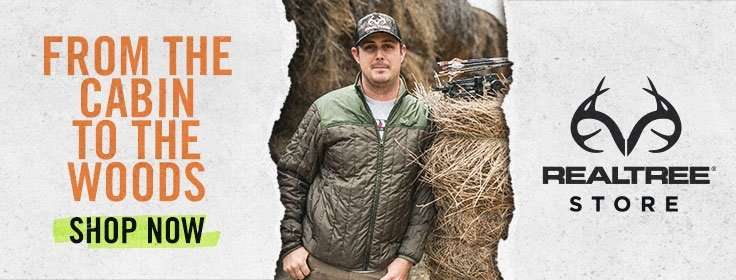Learning to catch coyotes? Check out these tips, updated with new video for 2023
It's a good thing my living wages didn't depend upon my early trapping efforts. I'd have been one pitiful fur trader. When I started trapping a few years ago I caught some raccoons and opossums early on, but it took the better part of two seasons before I caught a single coyote. That first catch was exciting, but it didn't do much to manage the predators on our farm.
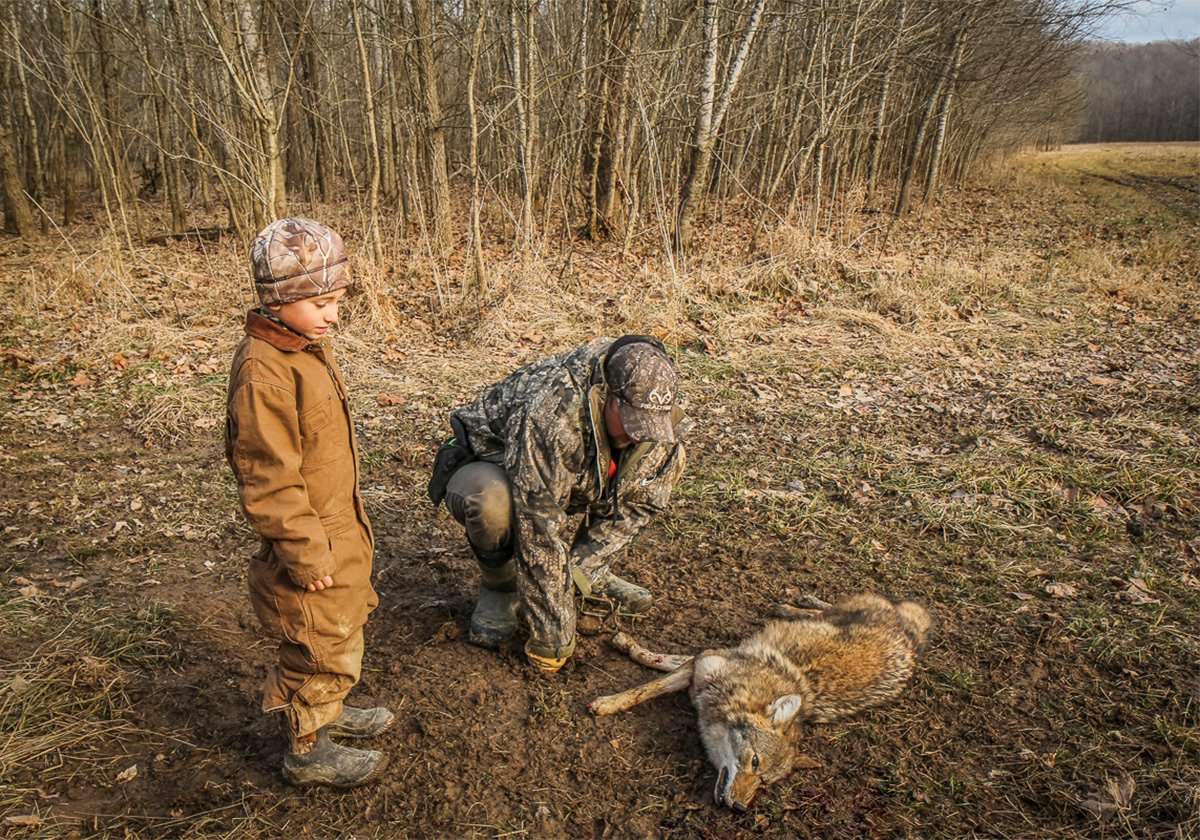
Like many modern trappers, management is my ultimate goal, too. Though I do sell my fur when I can, today's market won't even cover my costs. Still, improving the habitat on the farms I hunt is a year-round endeavor, and for every incremental improvement made, the habitat becomes more attractive for all types of wildlife, including predators.
(Don't Miss: 3 Killer Sounds for February Coyote Hunting)
Like most hunters, I've long been fascinated by these secretive critters. I believe Eastern coyotes are right up there with the most difficult-to-hunt animals in North America. You can have fun calling them in and shooting them, but you can't control them like that.
Our success rate on large predators — coyotes, bobcats, and foxes — has increased from 6% two seasons ago to 44% this season.
And sometimes, control is what's needed. Dense concentrations of predators take a toll on game populations. Studies in some Southeastern states — where the coyote is actually not native — have shown fawn mortality rates as high as 67%, with coyotes accounting for 42% to 60% of that.
Within the last decade on our farms, we started seeing a decline in turkey numbers in particular, but fewer fawns, too. All the while, we were getting more coyote photos than ever on our trail cameras. That's anecdotal stuff, of course, but it was my impetus for learning to trap — and I'd say many new trappers are in a similar situation.
(Don't Miss: Are Turkey Seasons Opening Too Soon?)
I wish I could trap later in the spring, closer to the turkey hatch and fawn drop, but the trapping season closes in February here in Kentucky, same as in most states. So I make hay when I can
and run a trapline off and on from about Christmas to the end of the season. We've kept close track of our catches for the past several winters, and we average about 0.2 predators per acre, year after year. That includes opossums, raccoons, skunks, foxes, bobcats, and coyotes. On 250 total acres, it adds up to a lot of teeth removed from the landscape each winter. And again, based purely on observation, we've had better turkey hatches and are seeing way fewer predators on our trail cameras since we've started trapping.
All that aside, the trapping itself is a lot of fun. And it's been especially enjoyable as our success rate on large predators — coyotes, bobcats, and foxes — has increased from 6% two seasons ago to 44% this season. That's not because there are more large predators this year, but because I've gotten better at catching them.
I can't offer "expert" trapping advice because I still have a lot to learn myself. Though I'm getting better with foot-hold traps, for example, I'm still clueless on using snares. Still, I can definitely elaborate on where I've screwed up. Looking back, I'm betting many of the mistakes I've made are similar to the ones a lot of new trappers make, too. So, here they are.

For a beginner trapper, it's tempting to think of baits and lures as something that will draw coyotes in like deer coming to a feeder. Instead, envision scents as a tool to stop a coyote and hold its interest on a route it's already traveling. Just like a deer hunter setting up in a hot pinch point during the rut, trappers must learn how to read the land and sign to put together a good ambush. But a trapper's ambush must be even more carefully chosen. It doesn't do any good for a coyote to walk within bow range of your trap. It needs to step on a 5-square-inch trap pan.
So, setting a random trap on a ridge near your deer stand because you saw a coyote there in October is low odds. Use coyote sightings to narrow down general areas, but within those areas, identify the major travel routes coyotes use over and again. On our farms, those routes are mostly the dirt access roads that we travel by ATV and tractor.* Secondary options include fire breaks, heavy deer trails, and convenient creek crossings. Areas where two or three trails join are best. Walk or drive those routes, find fresh coyote tracks and scat, and set traps right on the sign.
* It goes without saying to be mindful of where you set traps, particularly if you're not trapping your own property. It's obviously irresponsible — and probably illegal — to put traps where people and domestic animals commonly travel.

One good trap set is better than three bad ones. But to catch coyotes, you should avoid bad sets altogether, and instead make lots of good ones. When I went from running six foot-hold traps to a dozen on 70 acres per night, my catch rate increased. But I don't try to cover all corners of a property. As mentioned above, my strategy is to set multiple traps on trails with the heaviest sign. When a coyote comes back through that trail, I want to make sure he encounters one of my traps. This season on one farm, I caught four coyotes over five nights, each from the same 150-yard stretch of dirt road, and three within 20 yards of each other. Action like that isn't uncommon with good sets in the right spots.
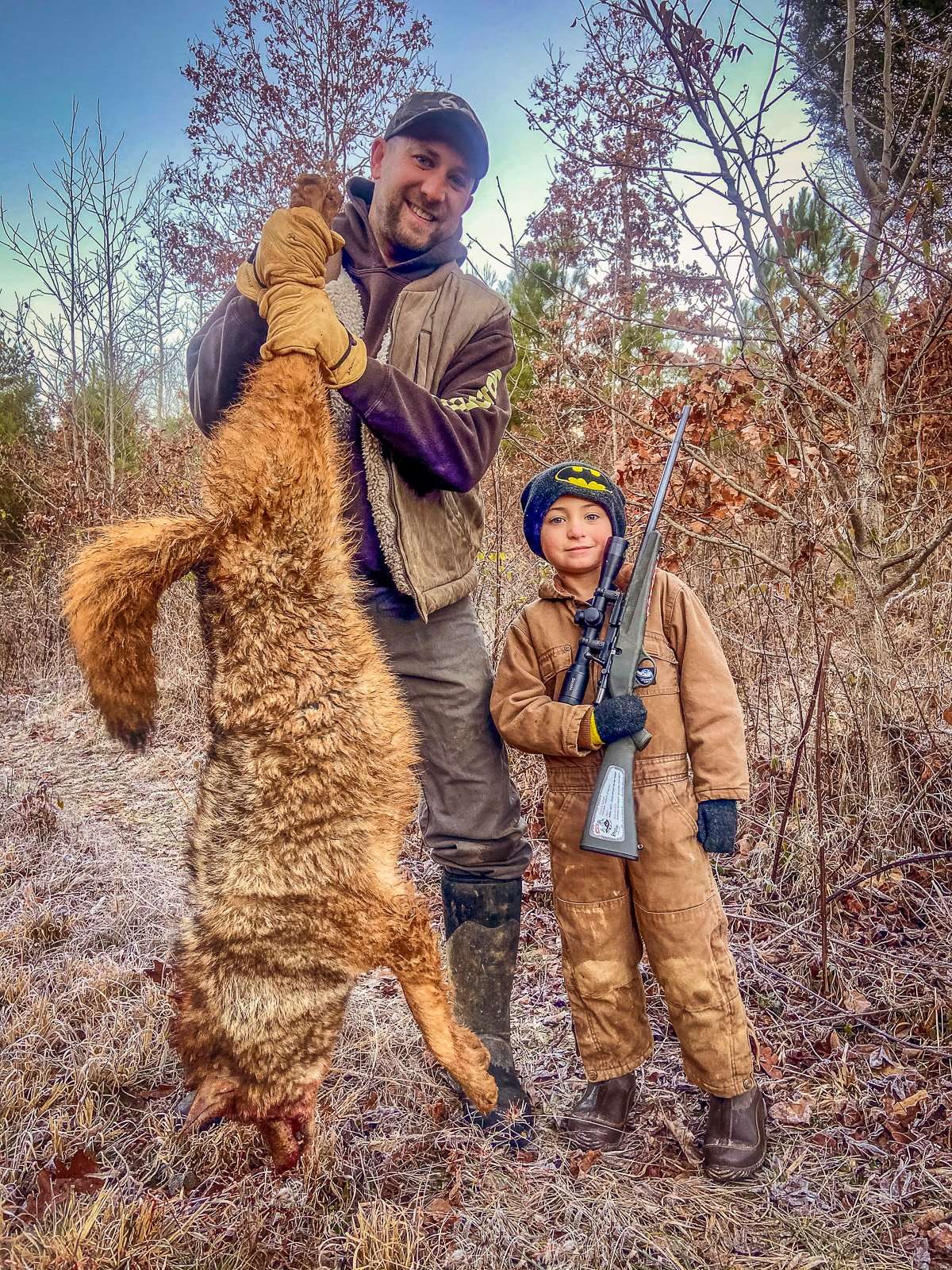
Coyotes have home ranges, but they don't use the landscape like deer. Many old-school trappers insist that coyotes cycle through an area every three days, and I absolutely believe that. In some ways, I think coyotes approach their hunting grounds same as us, hitting a milk run of productive, familiar spots within their respective territory. I've found that fresh sign almost guarantees coyotes will be back through an area — but maybe not for a few nights. I like to run a trapline for at least 10 nights in a row on a given farm, and nights 3, 4, and 5 are statistically my most productive. Just the other day, I was headed to the farm to pull traps that had been out for 11 days without any activity — and I had two coyotes, a mated pair, caught within 50 yards of one another. Leave your traps in the ground, and let them work.

My first coyote traps were cheap ones that I bought at the hardware store, and I secured them by chaining them to trees or hammering rebar stakes into the ground. That meant that I was frequently setting traps where my equipment allowed, and not where they needed to be. When I broke down and invested in the gear I actually needed, I started catching coyotes.
Here's a list of items I use on every set:
- Bridger No. 2 Dogless trap (I paid full retail for a dozen of these, and they were worth every penny)
- Cable earth anchor (instrumental in bedding traps on open roadways)
- Copper name tags (required by law on every trap)
- Earth anchor driver
- Trapping hammer (for digging trap beds, hammering in earth anchors, and punching dirt holes)
- Dirt sifter
- Waxed dirt
- Waxed paper
- Whisk broom
- Leather gloves (for setting trap)
- Rubber gloves (for handling scent)
- Lures, scents, and baits
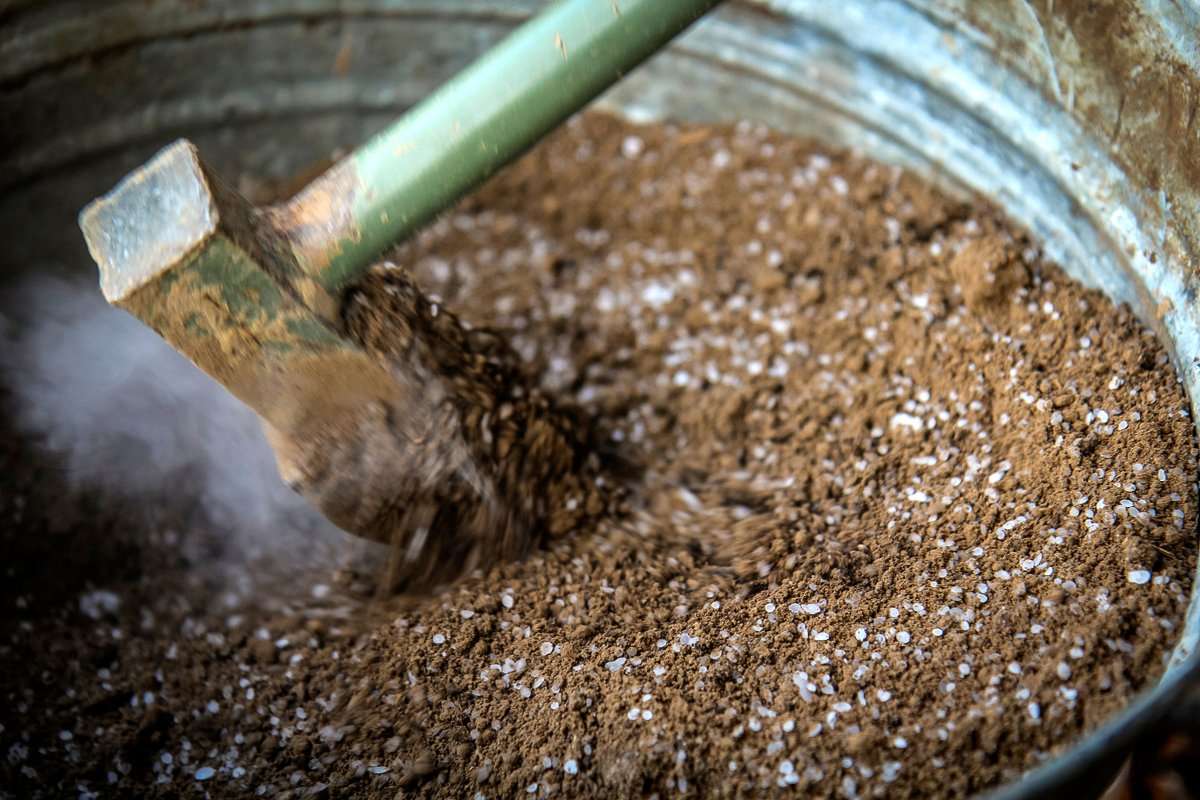
Winter mud and frozen ground can prevent traps from firing, even if a coyote steps on the pan.
It's rainy here in January and February, and so finishing my sets with waxed dirt has been a game changer for me. I make it by sifting fine dirt into a bucket, mixing it with flaked wax (sold at trapping supply retailers), and then heating and stirring the mixture in a metal washtub over a propane burner until the wax melts. The result is dirt that beads and repels water. After I bed a trap, I cover the pan with a sheet of wax paper, and then sift a few good scoops of waxed dirt over the top of it. No matter the weather, the waxed dirt around the trap pan and springs keeps it working. This season I caught a coyote after a torrential downpour in a trap that was submerged under 4 inches of puddle. Western trappers may not need waxed dirt. But in the rainy Southeast, it's almost not worth setting a coyote trap without it.

New traps are shipped with oils and grease to prevent rust. Those chemicals smell, and if a coyote smells your trap, the game's over. I boil each of my traps for 10 minutes, let them dry, and then treat them with Full Metal Jacket, a liquid that waxes and weatherproofs the traps, keeping them firing for the long haul. Full Metal Jacket is sold at trapping suppliers, but there are plenty of other dips, dyes, and wax compounds that probably work just as well.
Some traps need tuning out of the box, and they all need it over the long haul. Pans should be perfectly level with jaws. Trappers debate pan tension quite a bit, but I like to keep mine light, around 2 to 3 pounds. For management trapping, catching opossums and raccoons is beneficial, so I'm not worried about smaller critters "ruining" my set.

Modern traps are designed to hold animals without inflicting injury. It stings to get caught, but they won't chop off your fingers. Learn to work comfortably around your traps. Bedding them properly — that is, ensuring the trap is set solidly in the ground with dirt packed tightly around the jaws — is a requirement for every set. If a trap wobbles when a coyote steps on the jaws, it's a wasted set. Wobbly traps spook coyotes.
When you buy new traps, spend time at home learning exactly how they work before setting them in the field. I like to load the springs, and then flip the free jaw of the trap over (as shown in the photo), so that even if the trap fires accidentally, I'm not getting caught myself. I open the jaws as I'm finishing bedding the trap, just before I cover the pan with wax paper and waxed dirt. Building that comfort level with your traps helps you work around them more confidently, and that leads to making good sets faster.
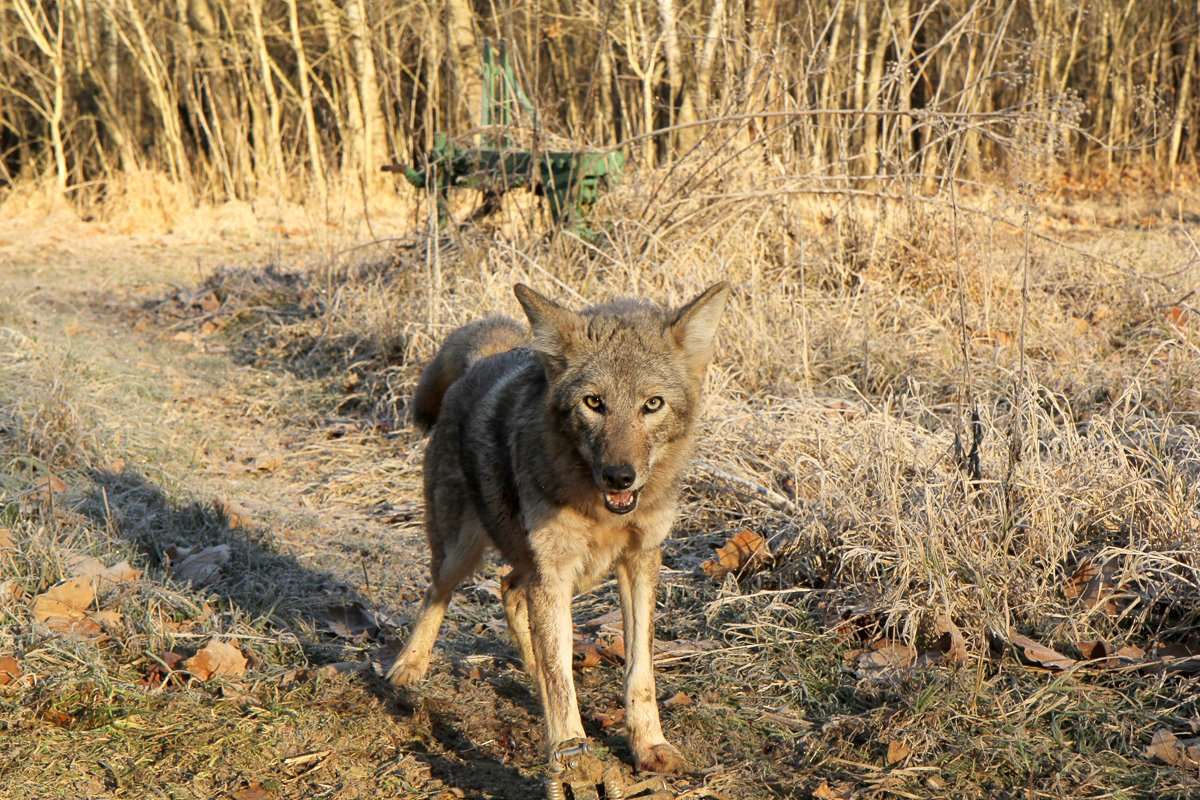
Learn how make a dirt hole set. YouTube instruction abounds. This do-it-all set has a hole in the ground with bait or scent inside. The trap is buried just under the ground, in front of that hole. When the coyote stops to investigate the goodies in the hole, it hopefully steps on the trap pan.
Depending on the advice you read or watch, dirt hole sets call for a "backing," which is some obstruction behind the dirt hole that forces the coyote to dig for the bait from the trap side. Other advice calls for arranging sticks or rocks around the trap, so as to guide the coyote's foot to the trap pan.
I used YouTube as a guide for learning the basics but have refined what works for me. My best coyote sets are subtle. Backing is usually just a tuft of grass, and guiding is nothing more than a few clumps of dirt around the trap to give the coyote a convenient place to step. My dirt hole is angled 45 degrees from the pan, underneath the backing, and about 6 inches deep. I like the dirt hole to be about an inch outside the trap jaw nearest the backing, and offset just a bit from the trap pan. Set that way, a coyote will naturally approach the bait in the dirt hole from the trap side, and when he drops his nose for a sniff, his front paw will be positioned right atop the trap pan. If he likes what he smells, he'll dig — and odds are you'll catch him.
I like to camouflage my sets with dirt from the immediate area over the top of the waxed dirt. I want the trap to be level with the ground around it, and not a shallow depression. I might blend in leaves or bits of grass to make it disappear completely. Perfectly hidden sets work best for me. I've yet to catch a coyote on a set with logs, large rocks, bones, or other elaborate guiding to steer a coyote into the trap. I figure that's what the scent is for.
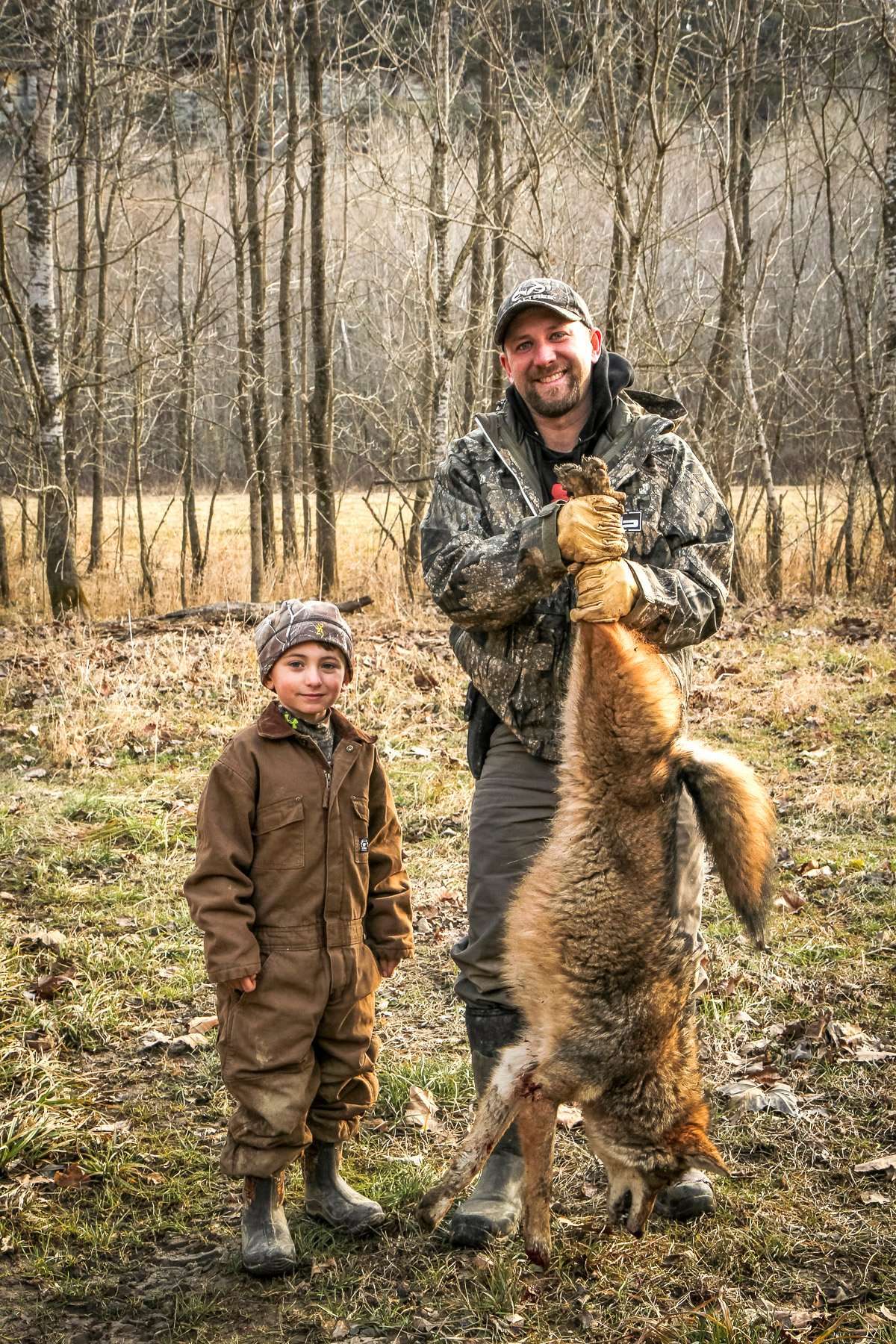
Can you stuff a chunk of venison or beef down a dirt hole and catch a coyote? Sure. But commercially packaged lures and baits work better. Pungent gland lures and urine around the set trigger territorial responses. Bait in the dirt hole gets a coyote to dig.
I stuff a thumbnail-sized piece of bait — Hoosier Trapping Supply Top Dog and Caven's Hiawatha Valley are my current favorites — in the dirt hole. I put a drop of lure, like coyote gland or skunk scent, on the backing, and I sometimes finish the set with a squirt of fox pee on nearby brush. I freshen the bait on my sets after remaking them, or every four to five days. I use dedicated gloves for handling baits and scents, but I never wear them while actually setting the trap. You don't want a working coyote to dig at the jaws of your trap because you've contaminated them with scent.

There's a lot of good information on YouTube, and in various online trapping forums. I learned the basics from those resources, and by talking to buddies who were more experienced trappers. But don't ignore the cues you see on your own line.
Many insist, for example, on not getting near the trap area if you can't see a coyote, for fear of contaminating the set with your own scent. Maybe so … except that on multiple occasions now, I've cut coyote tracks around my sets that didn't make it onto the trap. I've bedded secondary "blind traps" a few feet downwind of the primary trap* and caught coyotes the next morning. I always like to inspect my traps for activity, especially if I can drive up to them and look them over from the seat of my pickup or UTV.
Lots of trappers say that if you catch a coyote, you should always reset that trap where it sits. The scent left behind in the "catch circle" draws in new coyotes. That's certainly true — but I've personally had way better luck pulling the trap, washing it off, and moving it 5 to 10 yards outside the catch circle. Maybe the blood inside the catch circle spooks coyotes, or maybe it's just in my head.
Whatever the case, I know I catch a lot of coyotes like that. And when it comes to coyote trapping, building confidence in your own system is about the closest thing I can give you to expert advice.
* Check the laws in your state, since some areas have spacing requirements between traps.


